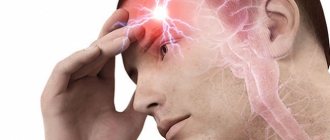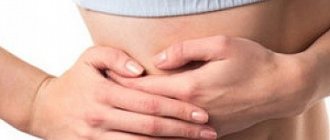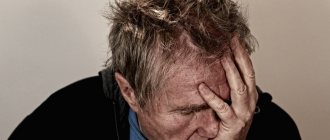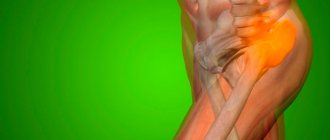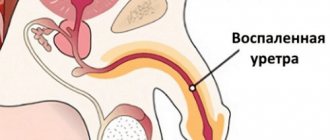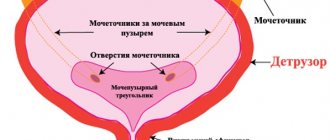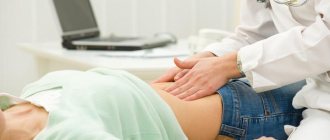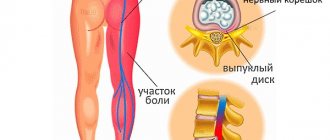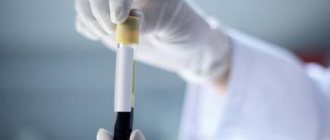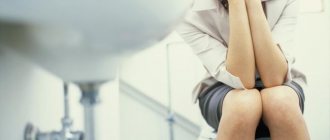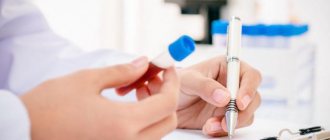A severe headache in the temple area forces even the most resilient people to resort to the use of medications. This is due to the fact that blood vessels and nerve endings are located in the temple area. Any slight pressure on them can cause unbearable pain.
Important! 98% of people in the world have encountered this pathology.
Temporal pain is difficult to predict. It can begin at any time - in the morning, after waking up, during the day, during work, or at night, while sleeping. Aching, periodic, pulsating, constant, in the left, right, or both temples at once, is often accompanied by nausea, fear of light, and vomiting.
When you have a headache in the temple area, the reasons for its occurrence can be different - from overwork to serious pathology.
The main reasons for the development of pathology
If discomfort is felt daily, over time it leads to a general deterioration in a person’s health. Mostly headaches in the frontal or temporal region are caused by the following reasons:
- Violation of vascular tone of arteries and veins.
- Poisoning. Due to intoxication of the body, the headache is localized in the temple and can also affect the forehead. You can be poisoned by alcohol, food, and chemicals. In this case, the sensations will be pronounced.
- VSD. The human autonomic system ensures the automatic performance of certain functions of the human body. If its activity is disrupted, the patient experiences dizziness, tinnitus, and pain.
- Hypertension or hypotension. This is often caused by changes in weather conditions, overwork or stress.
- Colds or infectious diseases of the respiratory system, throat, nose.
- Hangover syndrome.
- Emotional disorder, stress, mental fatigue.
- Problems with the menstrual cycle, menopause. A woman is very vulnerable during this period, as her hormonal levels change. Unpleasant sensations can bother you constantly.
- Inflammation of the vascular walls.
- Atherosclerosis. Since cholesterol plaques begin to form on the inner walls of blood vessels, this contributes to the narrowing of their lumen, as well as its blockage. That is, blood circulation in the brain is disrupted. At the same time, the pathology is characterized not only by frequent headaches in the temples, but also by problems with memory, intelligence, and mental disorders. Heart problems develop, increased irritability and fatigue appear.
Read more about the symptoms and treatment of cerebral atherosclerosis.
- Impaired functionality of nerve canals in the cranial region.
- Disease of the temporomandibular joint.
- Migraine. The pain here is very intense, but manifests itself mainly on one side. Additional symptoms include fear of loud noises and bright lights, sensitivity to smells, nausea, dizziness, and disturbance of spatial orientation.
Neurologist, immunologist Kirill Aleksandrovich Shlyapnikov will give an interesting talk about the most common types of headaches and the difficulties in their diagnosis and treatment:
- Increased intracranial pressure. With this disease, cerebrospinal fluid begins to put pressure on the tissues and membranes of the brain. Discomfort is localized not only in the temples, but can also affect the forehead, as well as other parts of the skull. In addition, nausea appears and vision is impaired. If the disease progresses, the patient develops a convulsive syndrome and a disorder of consciousness occurs.
- Temporal arteritis. It is characterized by the occurrence of an inflammatory process on the membranes of the temporal and carotid arteries in people who have already reached 50 years of age. The onset of the pathology is quite acute, as the patient develops malaise and insomnia. The pain in the temples is constant and severe. In this case, the intensity of symptoms increases at night and after lunch. A normal conversation can provoke an intensification of an attack, and if you try to palpate your temples, the pain syndrome becomes very sharp.
These reasons are the main ones, but not the only ones. Diagnosis of pathology must be accurate and differential, otherwise treatment may be prescribed incorrectly.
Other causes of pain
Pain can be caused by carbon monoxide poisoning, prolonged fasting, climbing to a height, flying on an airplane, or descending to great depths. There are also other reasons for discomfort:
- Trigeminal neuralgia. Such inflammation can lead to damage to the nerve fibers of the skull. Pathology develops in patients who have reached 40 years of age. The attack is characterized by an intense headache that appears spontaneously. A spasm occurs on the face; unpleasant sensations can affect the cheeks, teeth, and eyes.
- Head injury. Headache in the temples is not the main symptom.
- Poor nutrition. Some foods and drinks that contain monosodium glutamate may cause headaches. If you use them constantly, this will negatively affect the overall functionality of the body.
The condition of our body directly depends on nutrition. The picture shows products containing artificial monosodium glutamate, which causes various disorders, as well as headaches
- Lack of sleep. Insomnia very often leads to a person having a headache in the temples. Moreover, if this state lasts constantly, then over time the body becomes exhausted, which does not have the opportunity to restore its energy reserves.
- Adrenal pheochromocytoma. It provokes an unpleasant pulsation in the temple. The fact is that with such a pathology, an excessive amount of adrenaline is produced in the human body. This provokes a sharp increase in blood pressure, sweating appears, the skin turns pale, and the head hurts. The duration of the attack ranges from 5 minutes to 2 hours.
Pain in the temple and forehead can strike a person at any time. However, if it recurs frequently, then you need to undergo an urgent examination. This pathology should be treated by a neurologist, as well as other specialists, depending on the cause of the headache.
Features of drug treatment
Before you start fighting a headache, you should always consult with specialists. If a person already knows his diagnosis, he can treat himself, but he will have to undergo periodic testing. As for treatment, if there is a headache in the temples, depending on the cause, the patient may be prescribed the following medications:
- Ergotamines and triptans. They are used in case of migraine development. Conventional painkillers are useless in this case. Since this disease appears due to narrowing of the arteries, it is necessary to combat the root cause with special medications.
- To eliminate nonspecific headaches that appear constantly, long-acting analgesics are used.
- Nonsteroidal anti-inflammatory drugs: Ibuprofen, Aspirin. These are universal drugs that, in addition to frequent headaches, also relieve other unpleasant symptoms. However, they cannot remove the very cause of discomfort.
Drug therapy is carried out only after consultation with a doctor, since many drugs can cause serious side effects and only worsen a person’s condition.
How to get rid of this?
So, you have a headache (pain in your temples). What to do if this is caused by overvoltage? If you suffer from frequent such ailments, try to identify the causes so that you can avoid them. Don't overwork yourself or skip meals. Explore different relaxation techniques. Yoga is especially beneficial because it can relax both your mind and neck muscles.
If you need more help, your doctor may prescribe stronger pain medication or physical therapy. Many people with recurring tension headaches can prevent attacks by taking a tricyclic antidepressant. Fortunately, simple methods help most sufferers of this disease.
Alternative therapy
Regardless of whether a man, woman or child suffers from frequent headaches in the temple area, treatment can be carried out not only with medications, but also with the use of other methods. For example, to combat discomfort caused by psychogenic factors, aromatic therapy and psychotherapy are used.
To eliminate the symptoms of VSD, physiotherapeutic procedures, physical therapy, contrast showers and swimming are used. Acupressure of the temples is very effective. Just 6-12 presses are enough to reduce the intensity of unpleasant sensations.
In the video we show acupressure techniques for headaches. Let's look and use it in practice:
A cold or hot compress will help relieve pain faster. Here the choice is individual. If a patient is diagnosed with hypotension, then a regular cup of coffee will help eliminate frequent discomfort, which will increase the pressure in the blood vessels. But here it is important not to overdo it.
Folk remedies can also be used for therapy. Chamomile decoction or tea has a good calming and analgesic effect. If you drink it constantly, it will help strengthen your defenses, reduce inflammation, and reduce the frequency of headache recurrences. Nettle decoction is considered no less useful. To prepare it, 1 tbsp. l. dried raw materials are poured with 0.5 cups of boiling water. After infusion, the product is drunk 3 tbsp. l. three times a day.
Traditional medicine recipes for headaches - we have collected more than 30 treatment methods.
Physical activity is very useful, for example: walking in the fresh air, cycling, simple gymnastic exercises. If you constantly have a headache in the forehead and temples, you should not immediately use medications. You need to take pills only if simple ways to get rid of discomfort do not work.
How to cure this?
It also happens that you often have a headache (back of the head and temples). What to do with a very severe migraine? When prescription medications are needed, most doctors prescribe triptans, which are available as tablets, nasal sprays, or injections. Some of the most common such drugs are Sumatriptan (Imitrex), Zolmitriptan (Zomig) and Rizatriptan (Maxalt).
Triptans provide complete relief within two hours for 70% of patients. The effect is best achieved if treatment is started early. Some patients require a second dose within 12 to 24 hours. Because triptans can affect blood flow to the heart as well as blood vessels in the head, people with coronary artery disease or underlying risk factors for heart disease should not use them. Another contraindication is taking antidepressants.
Older migraine medications, including ergot extracts that contain barbiturates, are still used by some people. Others need to use anticancer drugs, stronger prescription painkillers, or even corticosteroids such as Dexamethasone.
Consult with your doctor to find the method that's best for you. Remember, however, that overuse of medications can lead to headaches returning and a vicious cycle of taking stronger medications. So if you need treatment more than two or three times a week, consider preventatives.
If you often have a headache (pain in your temples), what should you do? Some people can prevent migraines by simply avoiding their causes. Others benefit from quick treatment for occasional attacks. But people who suffer from frequent attacks should take preventative medications.
The most effective prescription drugs are beta blockers (such as Propranolol, Atenolol, and Metoprolol), some antidepressants (Amitriptyline), and antiseptics (Divalprox, Topiramate, and Gabapentin). "). Severe cases can be minimized by contacting a headache specialist.
Preventive measures
In order to prevent headaches in the temples from appearing frequently, it is necessary to prevent it. To do this, the following preventive measures should be observed:
- Sleep for the required amount of time. At the same time, the quality of sleep is also important. An uncomfortable mattress will not allow a person to rest well. For sleeping, it is better to choose an orthopedic pillow.
- Eliminate strong coffee and tea, alcohol from the diet, give up cigarettes, as well as medications containing narcotic substances.
- Give your eyes a rest. This is especially true for those people who work for a long time every day at the computer, with documents, and spend most of their time driving. In this case, the visual organ becomes very tired, the mucous membrane dries out. To avoid this, you need to blink more often, use special medications to moisturize the eye, and also perform simple exercises.
- It is better not to include canned food and foods with a lot of additives in your diet.
- Treat colds, infectious or inflammatory pathologies in a timely manner.
- To maintain mobility of the spine and prevent destruction of the vertebrae, you need to do a set of physical exercises daily.
- Avoid stressful situations, learn to get psychological relief.
There are a large number of different drugs and folk remedies to eliminate pain in the temple and forehead. However, if it is repeated too often, this indicates the development of a serious disease in the body. There is no point in delaying your visit to the doctor. It's better to play it safe once again.
Is it possible to avoid headaches in the temples?
When it hurts in the area where the temples and forehead are, the most common cause is a tense state of the ligaments that has lasted for some time.
Why? Every person does many things every day that have a negative impact on receptors and nerve endings. To avoid these troubles, you can follow these recommendations:
- Do not press your chin to your chest under any circumstances;
- sleep only on a comfortable pillow, preferably soft, then the spine will be in an even position;
- You should avoid slouching and not leaning on the armrests;
- during work, especially sitting, take breaks and take small walks of at least a minute;
- during a prolonged cough, you need to take something antitussive, otherwise the pain symptoms will return more often;
- try to frown and wrinkle your forehead as little as possible;
- take outdoor walks at least once a day;
- include exercises in your daily routine, which will include turning your head and neck;
- try to include foods rich in vitamin B in your daily diet;
- Do not get carried away with preservatives, various additives and flavor enhancers;
- exclude strong tea and coffee, as well as any alcoholic beverages, nicotine, and narcotic substances.
There are many remedies and drugs that can cope with these pain sensations in the frontal region. But before using them, it is best to consult a doctor. Because first of all you need to find the source of pain, and only then eliminate it. It is impossible to do this on your own without the help of a specialist.
